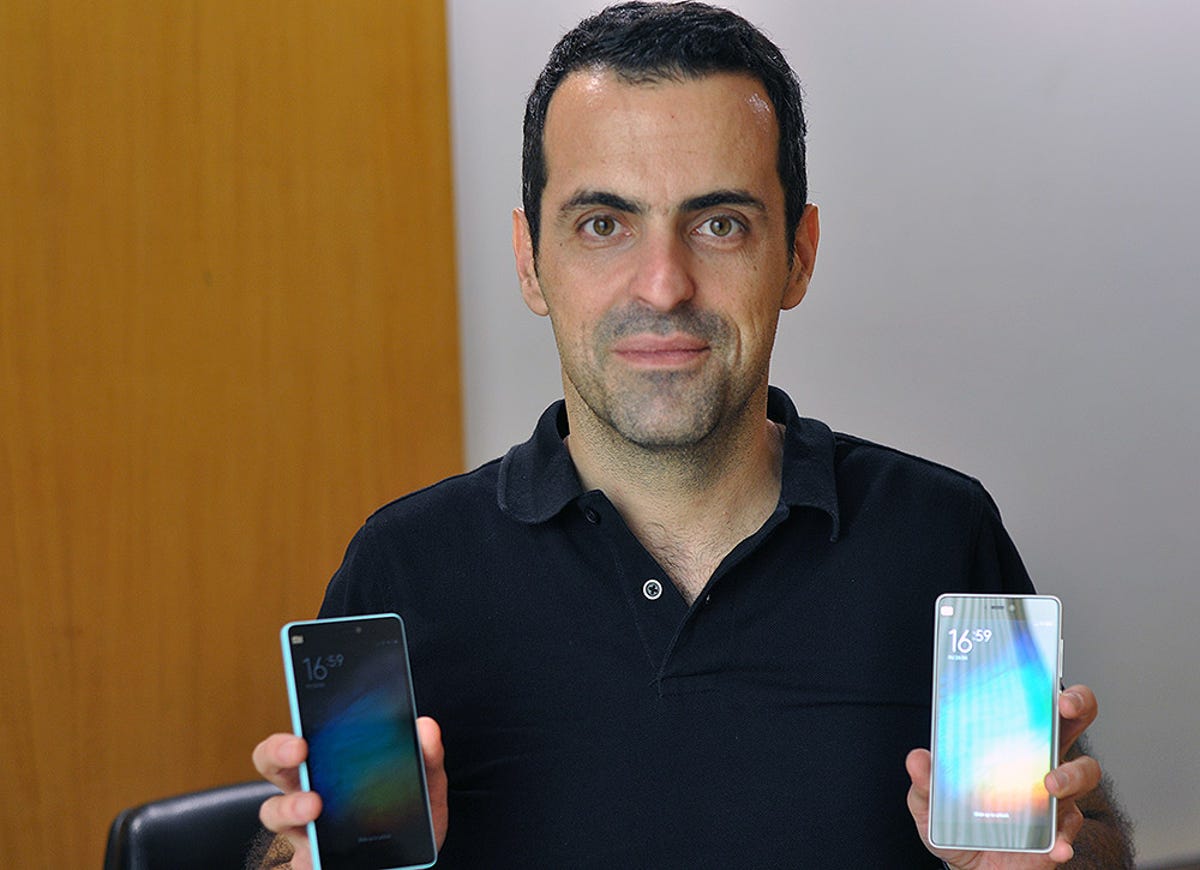
Aloysius Low/CNET
NEW DELHI — There’s no denying that Xiaomi’s new Mi 4i looks familiar, with its cute and colorful, rounded plastic frame. But while the Chinese smartphone maker is likely to take flak for its Apple-ish emulations, Xiaomi Global Vice President Hugo Barra says he had this phone in his head when he joined the company two years ago after leaving Google.
“I came on board thinking that Xiaomi needed a flagship phone for emerging markets,” said Barra here at the launch of the Mi 4i late last week. “I’ve spent plenty of time in these markets and thinking a lot about this stuff in my previous job. I do think that price really matters and everyone should have a flagship.”
Through the 18-month journey of the Mi 4i’s production process, Barra knew he wanted to make a phone specifically for India, and getting the project approved was much easier than expected.
As Barra explains it, the Mi 4i built upon some of the concepts from Google’s Android One plan to create low-cost smartphones, which launched last year. The former Android spokesperson may have had an inkling of some aspects of the Android One initiative, but Xiaomi has gone with a slightly more expensive, premium phone instead.
Xiaomi’s Mi 4i speaks to India with an attractive price (pictures)




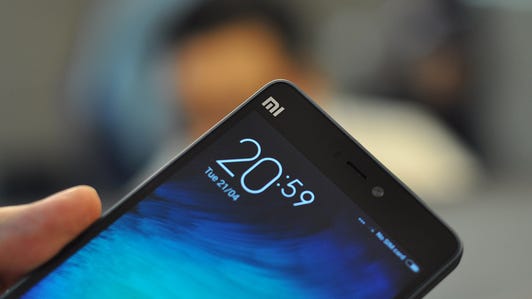

+10 more
It wasn’t difficult to convince Xiaomi’s co-founders Lei Jun and Bin Lin, Barra said. “We just spent a lot of time discussing what components we would use. They were very supportive from the beginning,” he added.
Given that the company barely sold phones in India at that time, the decision to create a phone specifically for that market speaks of Xiaomi’s far-reaching global ambitions. Founded in 2010, the company has already been working to expand into new markets where its low-priced smartphones and tablets are meant to appeal to budget-conscious buyers. The company is also trying to capitalize on a business model that revolves around selling products at or near cost.
‘Everything is flagship’
While most would consider the Mi 4i’s specs — such as its Snapdragon 615 processor — midrange at best, Barra is insistent that the phone is a flagship device, pointing out its full-HD, 5-inch display and large battery, features you’d normally find on higher-end phones. More telling is the fact that Xiaomi is using its Mi branding, instead of its budget Redmi line.
“There’s nothing in this device that you can’t point to as not ‘flagship,'” Barra said. “The display quality, the battery capacity, the technology itself, the camera, the form factor — everything is flagship.”
“The biggest thing here which we’ve heard since we launched the Mi 3, is it possible to build a flagship device and sell it under 15,000 rupees (around $235)? It takes a lot of work, as well as making no money,” Barra quipped.
And the Mi 4i shows a flagship phone for the emerging market can hit that price point without compromising on specs. Xiaomi claims that the phone’s 3,120mAh battery is one of the largest you’ll find in a 5-inch device, and to do so, it’s using a new cell made by Samsung.
The Mi 4i is only the second phone to launch with this new battery technology — the first being Samsung’s own Galaxy S6. Xiaomi also claims that it hasn’t skimped on the components, using the best it could find and, it says, selling the phone at cost.
To prove this point, Barra did a quick teardown of the Mi 4i, while explaining the thought process behind the phone’s design. As his fingers nimbly disassembled the phone with practiced ease (he’s been doing this all day), the Xiaomi exec was eager to explain just how much work had gone into making the Mi 4i.
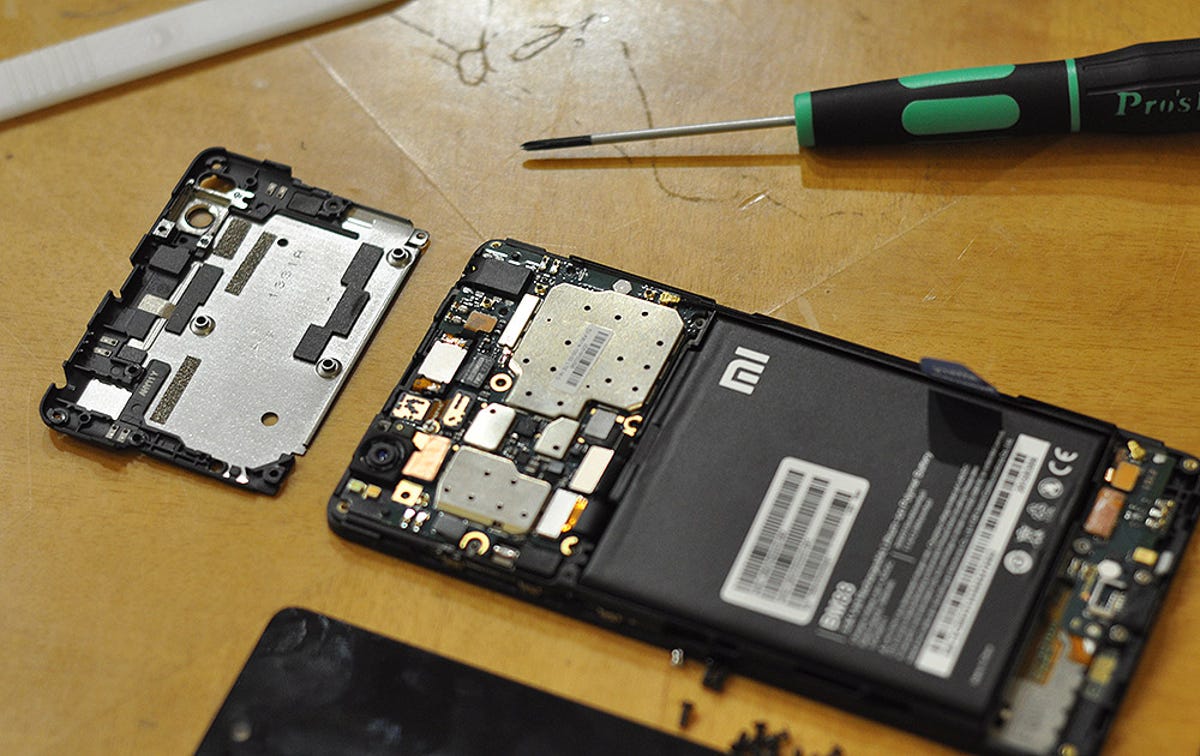

Aloysius Low/CNET
“The challenge here of course is how we make as much space as we can for the battery, knowing that if we can’t make a lot of horizontal and vertical space we would have to make it thicker,” he said. “Making as much space for battery meant reducing the motherboard as much as we could — it’s the smallest and densest motherboard we’ve ever made.”
Related stories
- India’s Ratan Tata takes slice of phone maker Xiaomi
- Xiaomi launches GoPro rival with a jaw-dropping price tag
- Xiaomi Mi Note review: Xiaomi’s latest flagship dazzles with quality design
- Xiaomi to partner on ‘smart’ sneakers
Barra also pointed that while the company could have saved even more space by combining both the speakers and the USB PCB board with the main board, he says this was purposely kept separate.
“One easy way to make things cheaper is to move the functionality up here for a single motherboard, but you’ll end up with the USB at the top and the speakers at the back top of the device. It’s obviously not good, as you’ll want the sound to bounce off your hand when you’re cupping your device.”
Barra’s in-depth understanding of the phone’s internals are reminiscent of Apple co-founder Steve Job’s dedication to making the insides of Apple’s products as beautiful as the outside. Xiaomi’s homage to that thought process is evident.
Sunlight Display and memory woes
One of the new features found on the Mi 4i, and one you’d not find on other devices, is Sunlight Display. Making the screen usable under the glare of outdoor light is clearly a key concern in India. The technology uses local tone mapping to determine which areas of the screen are darker, and then only light up those areas to make it viewable under bright light.
In the indoor demos I see, the pictures actually look a lot better with Sunlight Display turned on, so why didn’t Xiaomi just make the feature enhance all images without having to worry about the lighting conditions?
“This is a very long debate we’ve had on this,” Barra said. “Largely speaking, there’s the engineering camp and the product camp. The product camp says, if there’s a way to make images look better on the screen we should go for it. The engineering camp says that means you’d be looking at an image on your phone that’s not accurate, because it’s artificially made to look better. It’s very important for this accuracy to be preserved.”
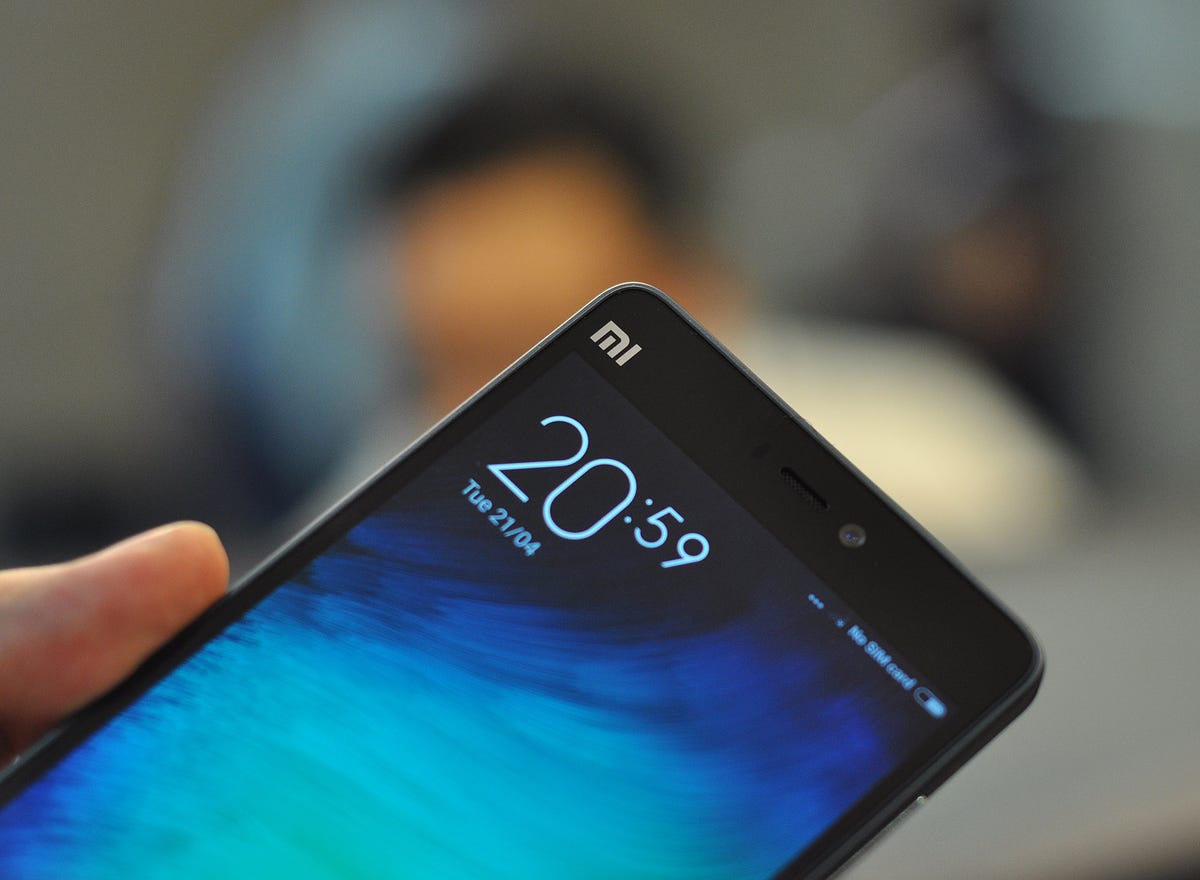

Aloysius Low/CNET
Barra, firmly in the product camp, argues that looking at images on the phone is a self-contained experience, but chose to settle with the engineering option, because Xiaomi didn’t want to misrepresent the image.
If there’s one thing that the Mi 4i lacks, it’s a microSD card slot for expanding its 16GB of storage. Barra says this is a design choice, as adding one would mean the removal of a SIM-card slot. There are, however, plans for a larger 32GB model in the future.
It’s Lollipop, but not
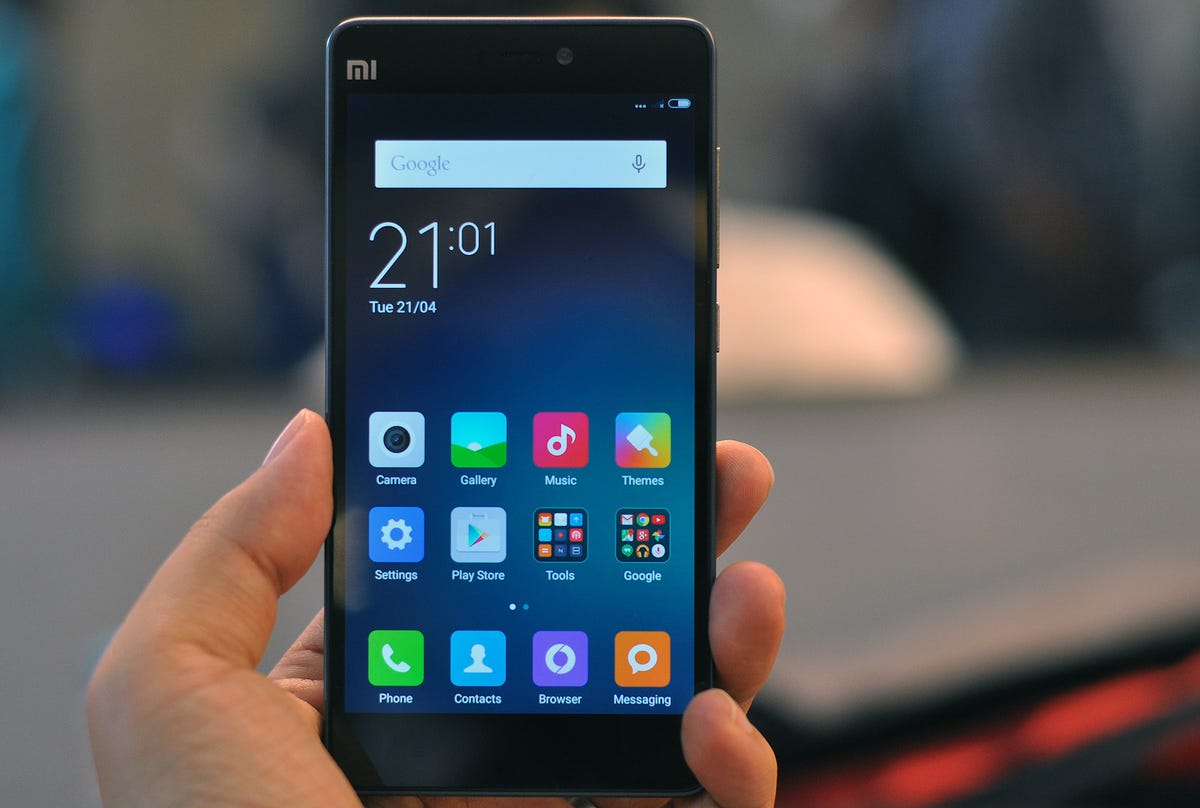

Aloysius Low/CNET
The Mi 4i is the company’s first Android 5.0 phone, but you’ll be hard-pressed to find any of Lollipop’s signature Material Design. Xiaomi’s unlikely to ever use stock Android (or close to it) for its phones, but it does support apps that use Google’s design language.
“We are not particularly big fans of Material Design,” Barra admits. “Without a doubt though, Google did a remarkable job of building something that everyone thinks is good enough.”
That’s not to say all of Android 5.0’s features are missing. Some of the effects, such as the quick flash of an arc to let you know when you’ve reached the end of a scroll are present on Xiaomi’s MIUI 6.0 custom skin. Nevertheless, you can see the influence of Apple’s iOS in MIUI — in particular, the lack of an app drawer. Like iOS, all of your apps are on the home screens.
Endgame
Xiaomi’s latest phone may not be a hit, but given the phone’s price and the brand’s burgeoning popularity in India — the company cracked the top five of market share in just a year, though Samsung is still far ahead — it would be safe to assume the Mi 4i will do very well.
Xiaomi’s CEO Lei Jun has boldly proclaimed a target of being the top smartphone vendor in India by 2020. No small feat, given Samsung’s current dominant market share of 22 percent. While Xiaomi trails far behind with 4 percent, the company only started operating in India last year. According to IDC, Indians are expected to buy 259 million smartphones per year by 2019.
“Xiaomi doing a global launch in India for its latest flagship signifies the importance of the India market for Xiaomi’s global expansion plans. India is the biggest market for Xiaomi outside of China — as big as the rest of the other non-China markets combined together in the fourth quarter of 2014,” said Kiranjeet Kaur, senior market analyst for IDC Asia.
“India is in a strong growth phase now while China has started to slow down. This move is crucial for Xiaomi to keep a competitive edge over others in India, which is expected to grow to 111 million smartphones in 2015 with a 38 percent year-on-year growth,” Kaur said. “What has been missing for Xiaomi phones outside of China till now was local market customizations, and with the Mi 4i, Xiaomi has indeed shown its commitment on this front.”
Whether the Mi 4i is the phone that will finally take Xiaomi to western markets is another question entirely. While the Mi 4i’s 4G LTE will work in the UK and Australia, frequency support for the US is lacking.
For now, Mi fans in Europe or the US will have to be content with accessories from Xiaomi’s online store, or seek out third-party retailers for their fix.
“This phone is a phone we will take into any market,” Barra said. “Let’s say if we decide tomorrow we’ll take this into the US market, of course I will take this device, but we’re not [doing so]. That said, the Mi 4i is a product we’re really, really proud of.”



